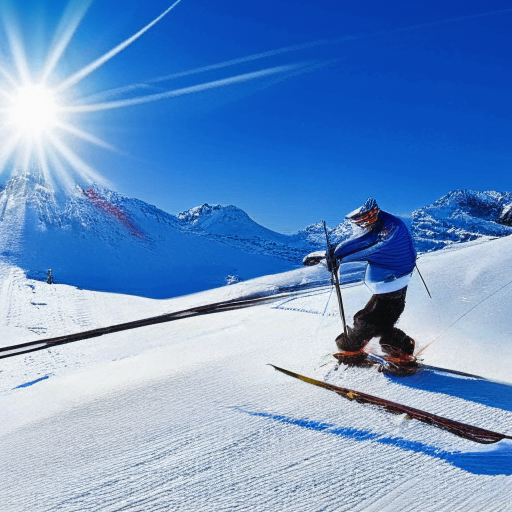Protect Your Vision: Essential Insights and Strategies to Prevent Snow Blindness
As winter casts its enchanting spell over the landscape, blanketing everything in a stunning layer of white, it’s crucial to recognize the potential hazards that accompany outdoor activities in such snowy settings. One of the most pressing concerns is snow blindness, a painful yet temporary condition resulting from excessive exposure to ultraviolet (UV) rays that bounce off snow. This detailed blog post delves into the complex science underlying snow blindness, examines how sunlight interacts with snow, and offers practical strategies for prevention, accurate diagnosis, and effective treatment. By understanding the root causes of this condition and adopting protective measures, we can fully enjoy the magical beauty of winter while safeguarding our eye health.

Deep Dive into the Medical Definition and Root Causes of Snow Blindness
The medical terminology for snow blindness is photokeratitis, which describes a temporary injury affecting the cornea, the eye’s outermost protective layer. This distressing condition primarily occurs from prolonged exposure to elevated levels of ultraviolet (UV) radiation, especially from rays reflecting off snowy surfaces. The intense sunlight can be particularly problematic at higher altitudes, where the atmosphere is thinner and less effective at filtering UV rays, leading to significant discomfort and, in some cases, long-term vision complications. Although snow blindness typically resolves on its own within a short timeframe, grasping its causes is vital for effective prevention and management, ensuring that we can enjoy our outdoor winter activities without risk to our eyesight.
Understanding the Impact of Sunlight on Snowy Environments and Your Eyes
To fully appreciate the dynamics of snow blindness, one must consider how sunlight interacts with the snow’s surface. Sunlight travels through the atmosphere and encompasses various wavelengths, including the potentially harmful ultraviolet rays. Upon reaching a snow-covered landscape, the distinctive reflective qualities of snow can reflect as much as 80% of these UV wavelengths back into the environment, substantially increasing exposure levels. This reflection effect is particularly pronounced in elevated areas, where the atmosphere’s ability to filter UV radiation is significantly reduced. Consequently, the eyes may quickly become overwhelmed by excessive UV exposure, which can lead to damage to critical components of the eye, including the cornea and conjunctiva, highlighting the importance of eye protection in snowy conditions.
Recognizing Key Symptoms of Snow Blindness for Timely Intervention
The symptoms of snow blindness typically emerge several hours after exposure to intense UV light. While the severity of symptoms can vary among individuals, common indicators include:
Eye discomfort and pain: Many people describe a gritty feeling or the sensation of foreign objects in their eyes, which can be quite distressing.
Redness and swelling: The eyes may appear bloodshot, with eyelids swelling and showing signs of inflammation.
Watery eyes: Increased tearing occurs as the eyes attempt to flush out irritants and provide relief from discomfort.
Blurry vision: Tasks that require clear sight, such as reading or driving, may become challenging due to distortion in vision.
Sensitivity to light: Increased sensitivity to light, known as photophobia, often accompanies headaches during this condition.
Sensation of halos: Some individuals may perceive bright rings or halos around light sources, adding to visual confusion and discomfort.
Practical Strategies to Prevent Snow Blindness and Protect Your Eyes
When it comes to protecting your eyes from the detrimental effects of UV radiation, proactive measures are always preferable to reactive treatments. Here are several practical strategies to minimize the risk of snow blindness:
Wear appropriate eyewear: Always opt for goggles or sunglasses that offer 100% UV protection when engaging in snowy activities. Look for eyewear labeled with UV400 or complete UV protection for optimal safety.
Select wraparound styles: Choose sunglasses or goggles designed to wrap around the sides of your face, ensuring comprehensive protection against both direct sunlight and peripheral UV exposure.
Utilize wide-brimmed hats: Hats with wide brims or neck flaps can provide additional shade, significantly reducing UV radiation exposure to your eyes.
Check the UV Index: Prior to outdoor activities, always consult the local UV Index, which forecasts daily UV exposure levels. Be mindful of limiting sun exposure during peak hours, typically between 10 AM and 4 PM.
Apply sunscreen: Applying sunscreen around your face and eyes can significantly diminish UV radiation exposure, enhancing your overall protective measures.
Take breaks indoors: If you plan to spend extended time in snowy areas, make it a habit to take regular breaks indoors. This allows your eyes to rest and recuperate from the intense brightness.
Relief and Recovery Techniques to Alleviate Snow Blindness Symptoms
If you begin to experience the symptoms of snow blindness despite taking preventive actions, several strategies can help alleviate discomfort and promote recovery:
Seek shade: Immediately find a darkened space or retreat indoors to protect your eyes from further UV exposure.
Remove contact lenses: If you wear contact lenses, take them out to minimize irritation and allow your eyes to heal without added pressure.
Apply cold compresses: Gently placing a cold, damp cloth over your closed eyes can effectively soothe discomfort and reduce swelling.
Use artificial tears: Over-the-counter artificial tears can provide temporary relief, keeping your eyes lubricated and alleviating dryness caused by snow blindness.
Avoid bright lights: Limit exposure to bright light sources, including screens and overhead lights, to reduce the impact of photophobia during your recovery.
Rest your eyes: Engage in minimal visual strain activities, avoiding reading or screen time, to give your eyes the essential time they need to heal properly.
When to Consult a Healthcare Professional About Snow Blindness Symptoms
In most situations, symptoms of snow blindness will start to improve within 24 to 48 hours as the cornea begins to heal. However, it is critical to seek medical attention if symptoms worsen or persist, as delays in treatment could lead to complications or secondary infections. Recognizing the signs early can greatly enhance recovery outcomes.
Experiencing snow blindness can significantly diminish the enjoyment of winter activities, but with the right knowledge and preventive measures, we can effectively reduce the risk while basking in the beauty of snowy landscapes. Stay vigilant about UV radiation levels, take regular breaks in shaded areas, and always prioritize protective eyewear. If you experience any symptoms, seek relief promptly and consult a healthcare professional if necessary. By focusing on eye safety, you can fully immerse yourself in the winter wonderland and create cherished memories without compromising your vision. Enjoy your adventures with caution and awareness!
The post Snow Blindness: Understanding Its Causes and Effects appeared first on Survival Bite.
The Article Snow Blindness Causes and Effects Explained Was Found On https://limitsofstrategy.com


I appreciate the thorough exploration of snow blindness in your post. Photokeratitis is indeed a critical concern for anyone spending time outdoors in snowy environments, yet it often goes unnoticed until the symptoms manifest. In my own experience skiing in heavily sunlit areas, I found that even on overcast days, the glare from snow can be surprisingly intense.
It’s interesting how a day that seems dreary can still pack a punch with glare off the snow. Many people expect bright sunshine to be the main culprit, but as you’ve experienced, overcast conditions can create a similar risk for snow blindness.
Your exploration of snow blindness and its implications during the winter months resonates deeply with me, especially as someone who enjoys winter sports and outdoor activities. The distinction you’ve drawn between the enchanting beauty of snow-covered landscapes and the hidden dangers they pose, like photokeratitis, highlights the necessity of vigilance when it comes to our eye health.
Your connection between the beauty of snow-covered landscapes and the risks of snow blindness really hits home. Every winter, I find myself torn between the serene allure of a snowy day and the practical concerns that come with it. I love hitting the slopes or just taking a walk through a winter wonderland, but I can easily forget how harsh those reflections from the snow can be on our eyes.
It’s interesting how that pull between enjoying winter’s beauty and staying mindful of the potential dangers reflects a broader aspect of life, don’t you think? I often feel the same way when I’m out in the snow. The pristine white landscapes can be so magical, making even familiar spots feel like an entirely new world. But then there’s that nagging reminder of the risks, especially when it comes to snow blindness.
It’s interesting how the beauty of winter can create such a strong pull, balancing both wonder and caution. Those peaceful snowy days have a way of inviting us outdoors, but as you mentioned, the sun reflecting off the snow can be deceptively intense.
It’s great to hear your thoughts on snow blindness and your passion for winter sports. You’ve touched on something quite important: the juxtaposition of nature’s beauty and its hidden hazards. When we’re out there, skiing down a pristine slope or snowshoeing through a winter wonderland, it’s easy to feel invulnerable, surrounded by such magnificence. But as you’ve pointed out, that very beauty can pose serious risks to our eyes.
It’s great to hear your thoughts! When it comes to winter sports, the thrill of carving through fresh powder might make us forget that snow is like a beautiful but dangerously deceptive snow globe. One moment you’re reveling in a stunning winter wonderland, and the next, you’re squinting at a world that’s transformed into a white blur because you didn’t think to wear sunglasses.